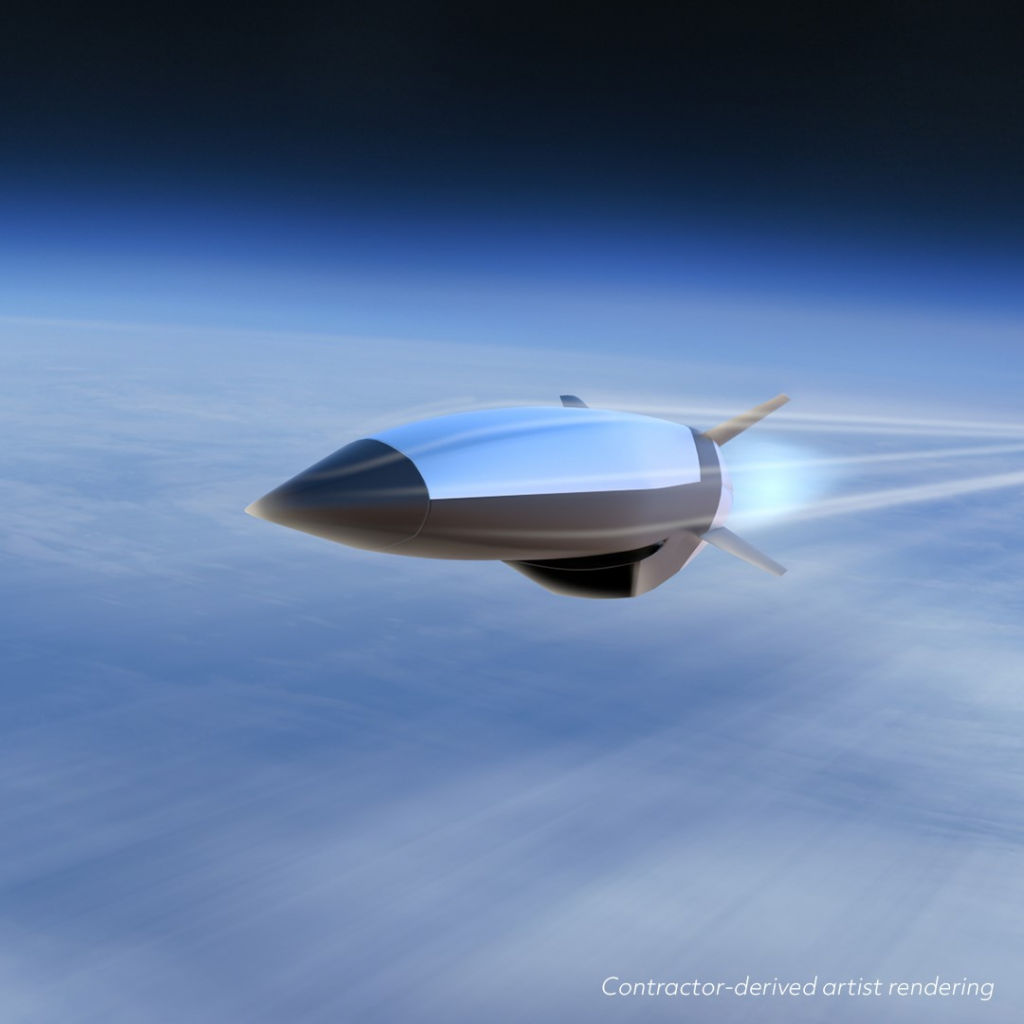Raytheon Awarded Hypersonic Attack Cruise Missile Development Contract
The United States Air Force announced Thursday that it had awarded Raytheon Missiles and Defense a $985.3 million cost-plus-fixed fee contract to develop the Hypersonic Attack Cruise Missile. The HACM is an air-breathing hypersonic cruise missile intended to be launched from fighter-sized aircraft, with Raytheon beating out competing offerings from teams led by Lockheed Martin and Boeing.
According to the Air Force, the contract will deliver operationally ready HACMs by 2027, with Air Force Chief of Staff Gen. CQ Brown Jr. saying that the operational HACM will “provide our commanders with tactical flexibility to employ fighters to hold high-value, time-sensitive targets at risk while maintaining bombers for other strategic targets.” Towards this, the contract funds design work and development of the missiles, as well as the deliveries of operationally ready test missiles.
Raytheon’s HACM design is powered by a scramjet engine designed and made by Northrop Grumman. “Our scramjet propulsion technology is ushering in a new era for faster, more survivable and highly capable weapons”, said Mary Petryszyn, Northrop Grumman Defense Systems corporate vice president.
The HACM is developed as part of the Southern Cross Integrated Flight Research Experiment (SCIFiRE), a technological partnership between the United States and Australia on hypersonic weapons development that started in 2020. The Air Force awarded SCIFiRE contracts to Raytheon, Lockheed Martin and Boeing in June 2021 for initial design of a hypersonic cruise missile, with Raytheon’s design now selected for development into an operational missile.
The Air Force states that collaboration with Australia will continue through HACM development, with Australian test infrastructure to be used in the initial HACM all-up-round flight tests. Air Vice Marshal Robert Denney, AM, Head of Air Force Capability for the Royal Australian Air Force, said that SCIFiRE “demonstrates our commitment with the U.S. to strengthen capability outcomes, deepen our alliance and strengthen our cooperation as we meet emerging challenges and support regional endeavors”.

